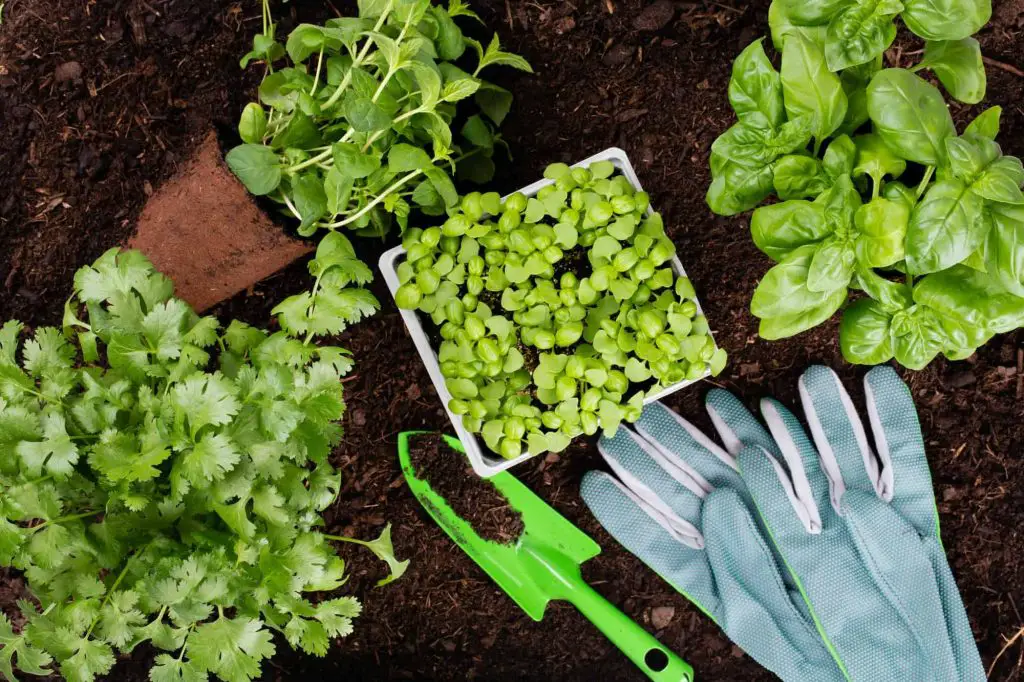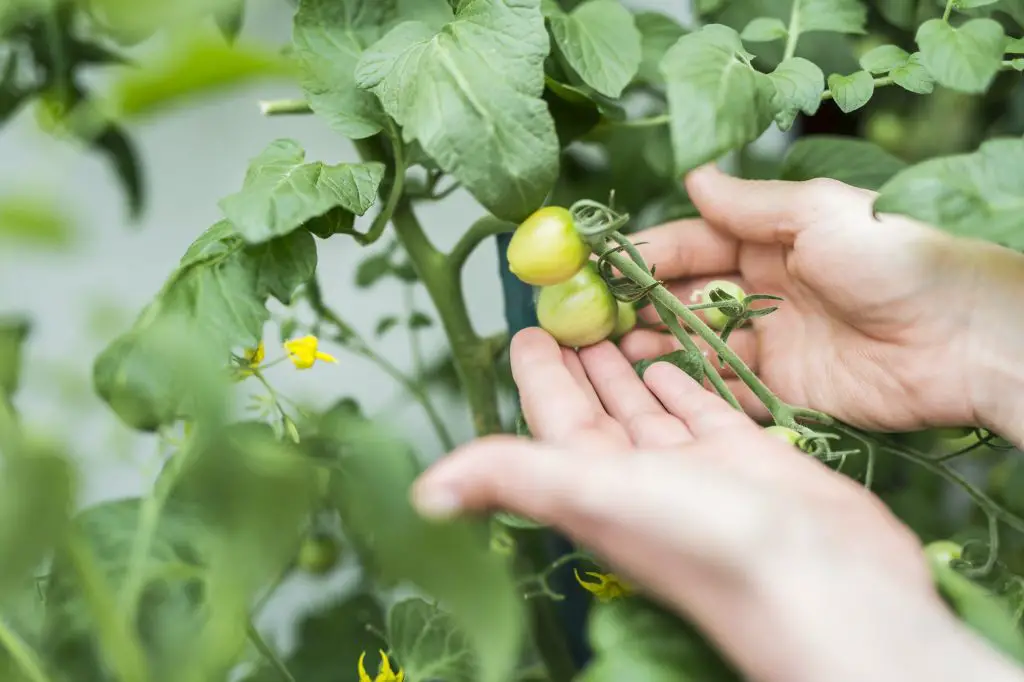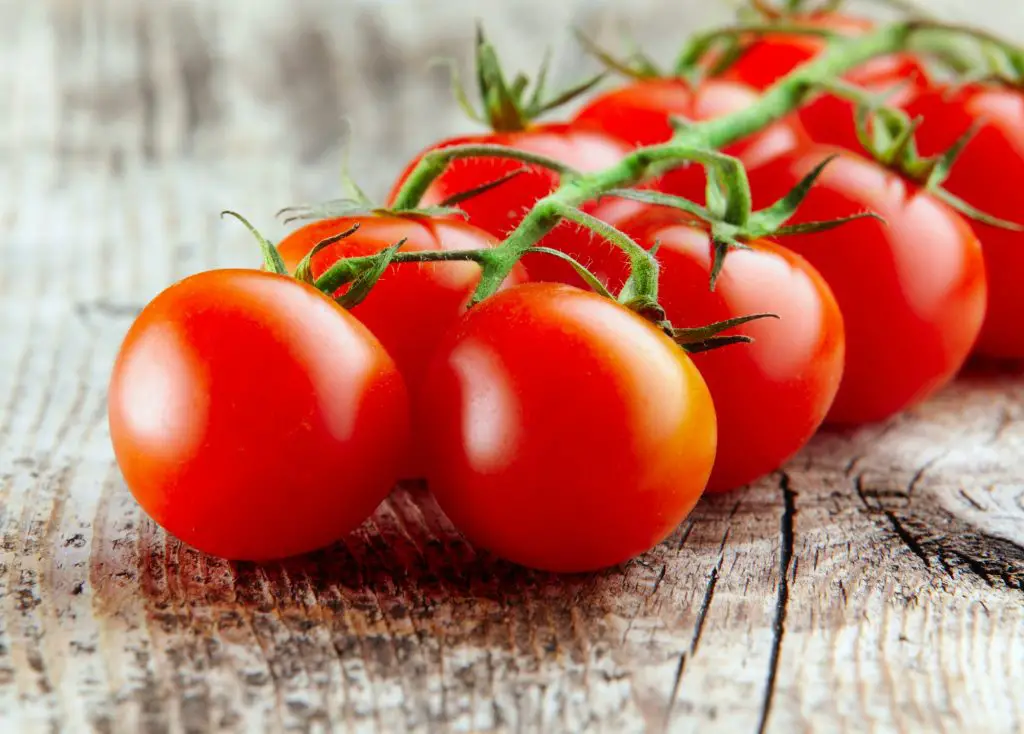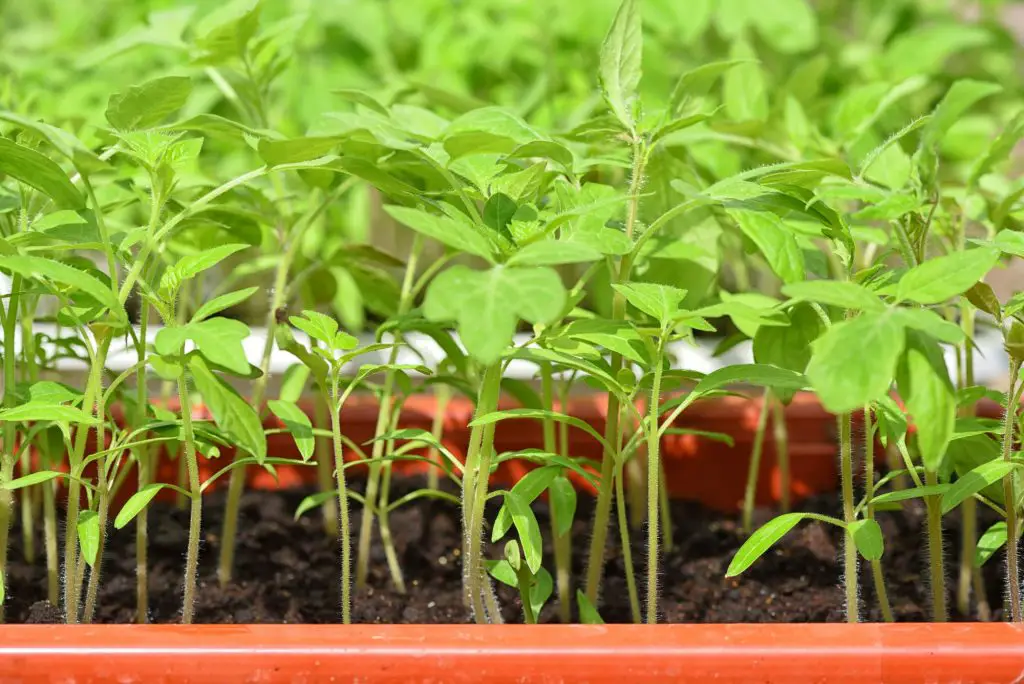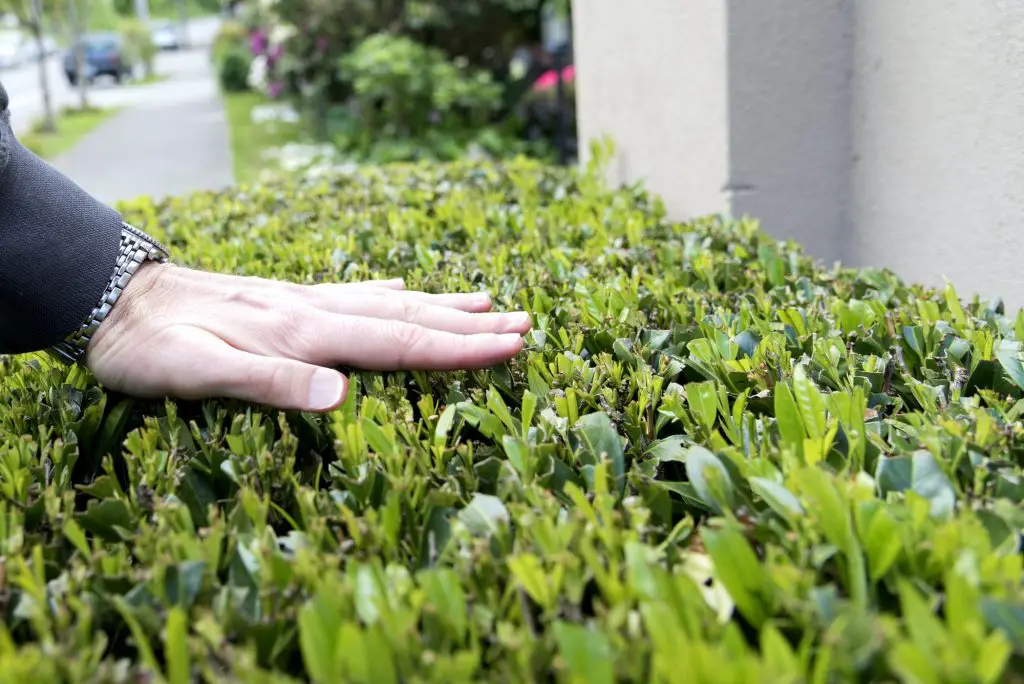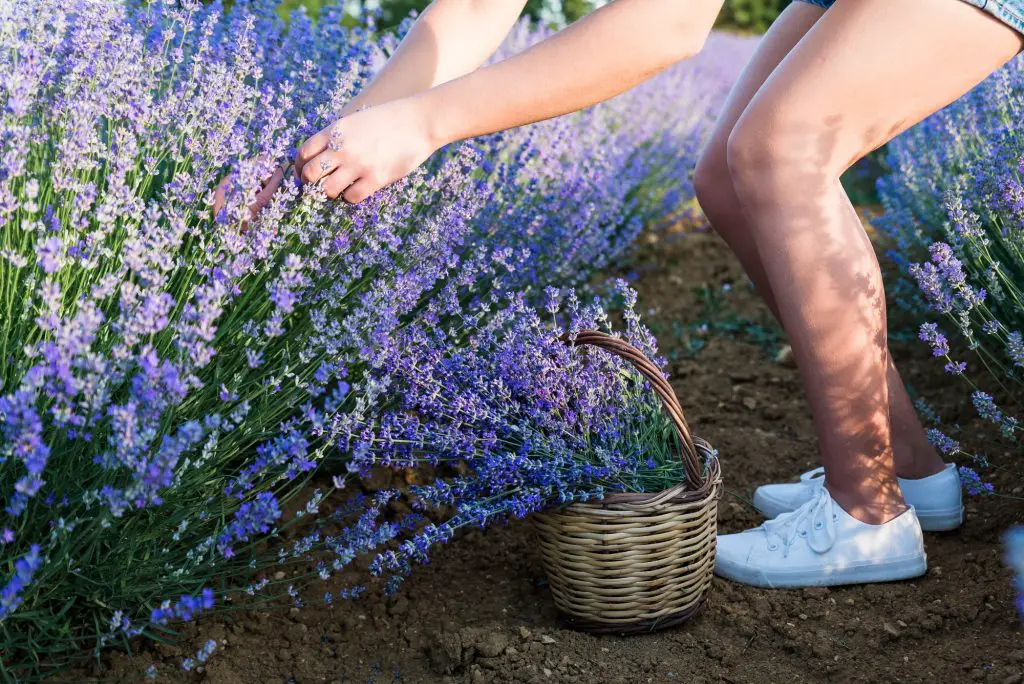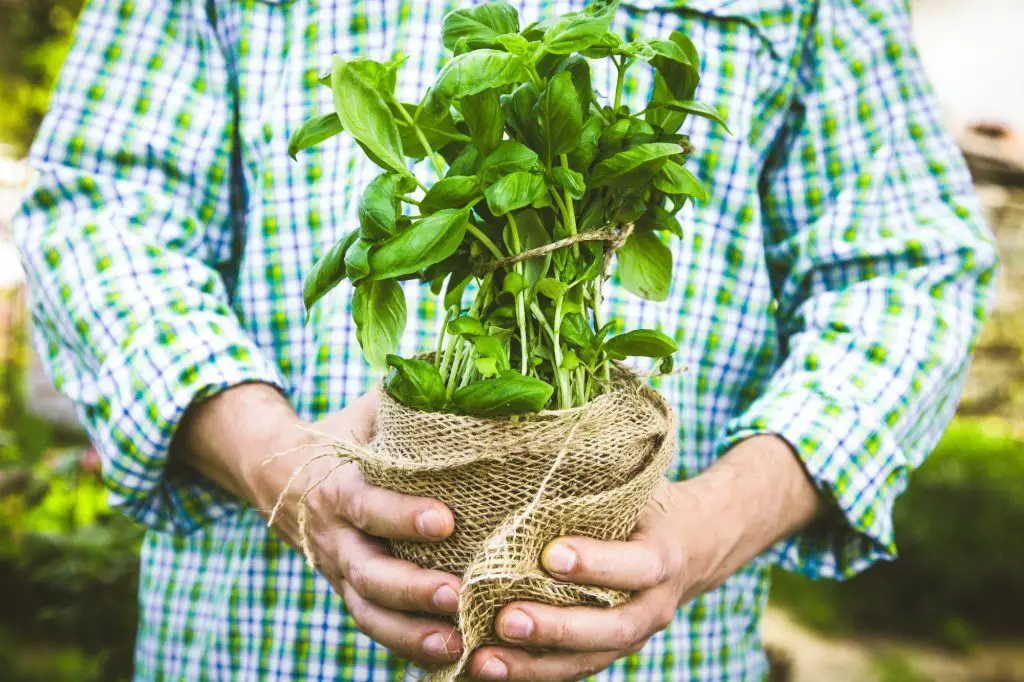Like perennial herbs that grow back every year, we have a list of vegetables that are considered perennials, the best part? You can eat most of them. These are vegetables that can live for more than two years—with few exceptions, they are available for harvest year after year.
There are dozens of vegetables, such as peppers, beans, tomatoes, and potatoes, as annuals. They usually complete their life cycle (vegetative and reproductive growth) in one year, so you are duty-bound to plant them year after year.
Nature is exceptionally diverse. It is filled with not only annuals but perennials, too.
Artichokes, asparagus, spinach (some varieties are perennials), and sweet potatoes are few notable examples of edible perennial vegetables that grow back every year.
If you are looking for such vegetables, that you can plant once and not worry the following year, you’ve come to the right place. We not only highlight these vegetables for you, but we also go as far as tell you whether it’s safe to plant where you live according to USDA hardiness zone data and other helpful information you’ll find useful.
Table of Contents
Edible Perennial Vegetables to Plant In Your Garden This Year
Here’s a list of the best edible perennial vegetables to plant today.
1. Chives (Allium schoenoprasum)
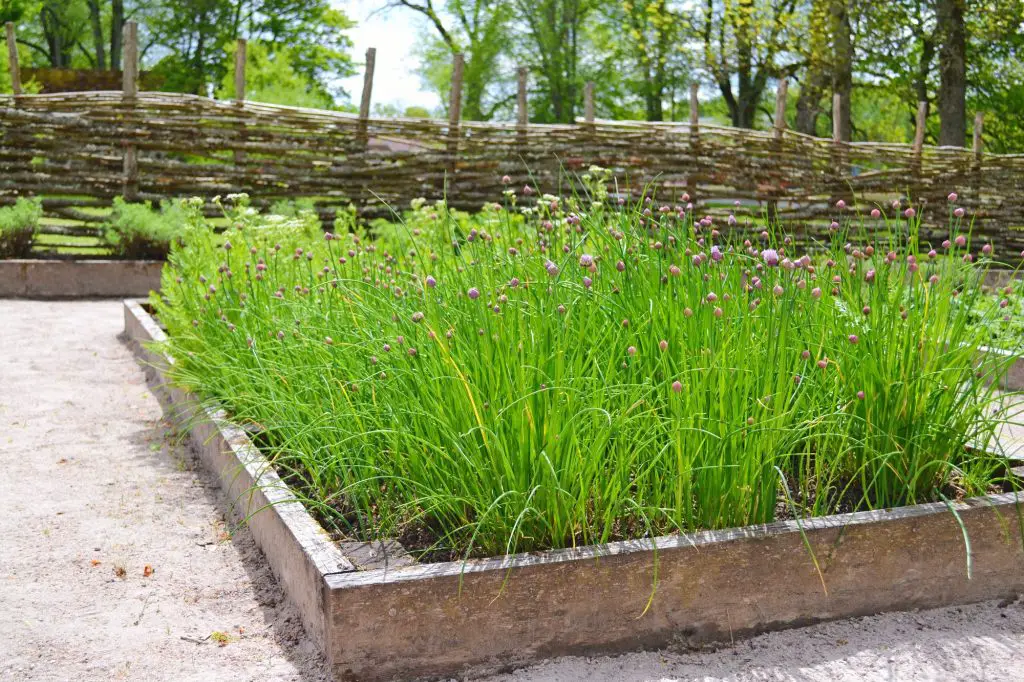
Chives are bulbous grass-like perennials that are easy-to-grow perennials.
Botanically, the vegetable falls into the garlic or onion family. Begin the member of the garlic family, the herbaceous vegetable taste like mild onion flavor.
The herb is considered one of the finest kitchen companions and is therefore used in soup garnishes or salads. To grow chives in gardens, opt for a location that receives whole light or partial shade. Further, prepare a soil that is loamy or sandy, well-draining, and slightly acidic to neutral.
Moreover, the herb is better adapted to USDA hardiness zones 3 through 9, and it is toxic to cats and dogs.
Last but not least, chives are not dependent on rich soil conditions as they can grow and thrive in most types of soils but applying a single top-dressing of nitrogen-heavy fertilizers will boost the growth and development rate.
2. Asparagus (Asparagus officinalis)
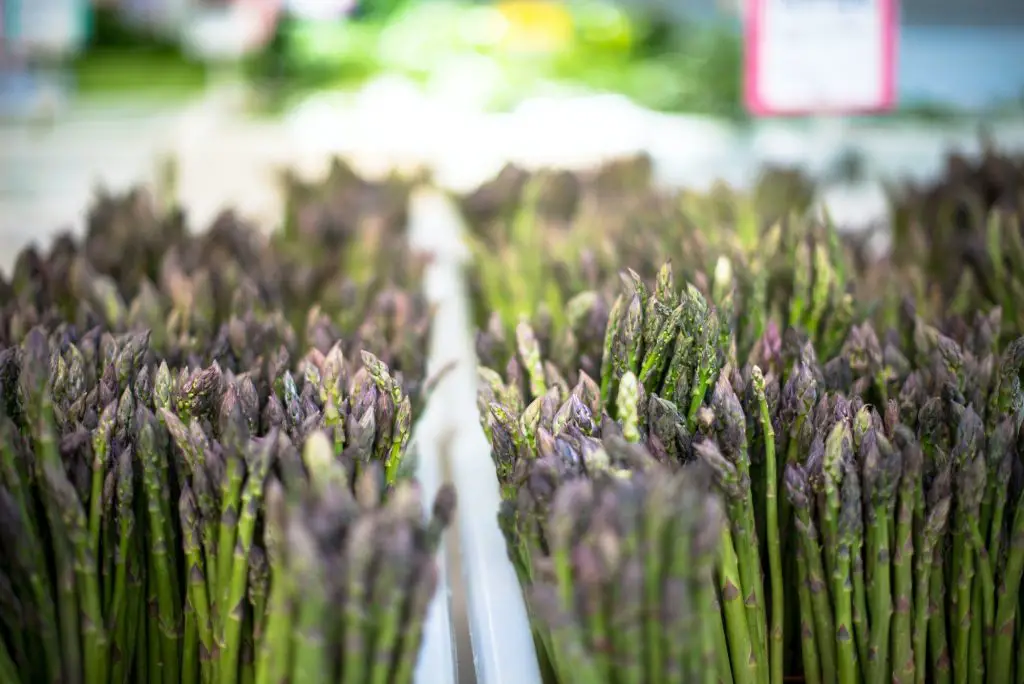
If you have got a little extra space in an outdoor garden, asparagus is the best herbaceous perennial to grow. It proliferates and fills the space swiftly.
Once you grow asparagus, you can reap the fruit for at least a couple of decades. The herb is not an easy-to-grow vegetable. It is picky about where it dwells and usually takes around three to five years to establish and mature.
The asparagus needs 06 to 08 hours of daylight. Before growing any asparagus strain, opt for the sunniest spot that receives full sun. Growing in partial or deep shade will make the herb fragile, weak, and prone to various bacterial and fungal diseases.
Try growing the herb in sandy or loamy soils with well-draining properties. To boost overall growth and development, add a plethora of organic matter and ensure the soil pH falls between 6.5 to 7.0.
Remember, the herb is well-suited to USDA hardiness zones 4 through 9 and non-toxic. Ensure to free the garden space from notorious and invasive weeds and large stones before planting. No doubt, asparagus is a water-dependent plant. To meet the water demand, never skip watering and keep the soil moist but frequently adding water to the ground.
Lastly, to boost growth and development, add a thin layer of an all-purpose organic fertilizer or compost. Further, to encourage roots development, you can add rock phosphate inorganic fertilizer.
3. Rhubarb (Rheum rhabarbarum)
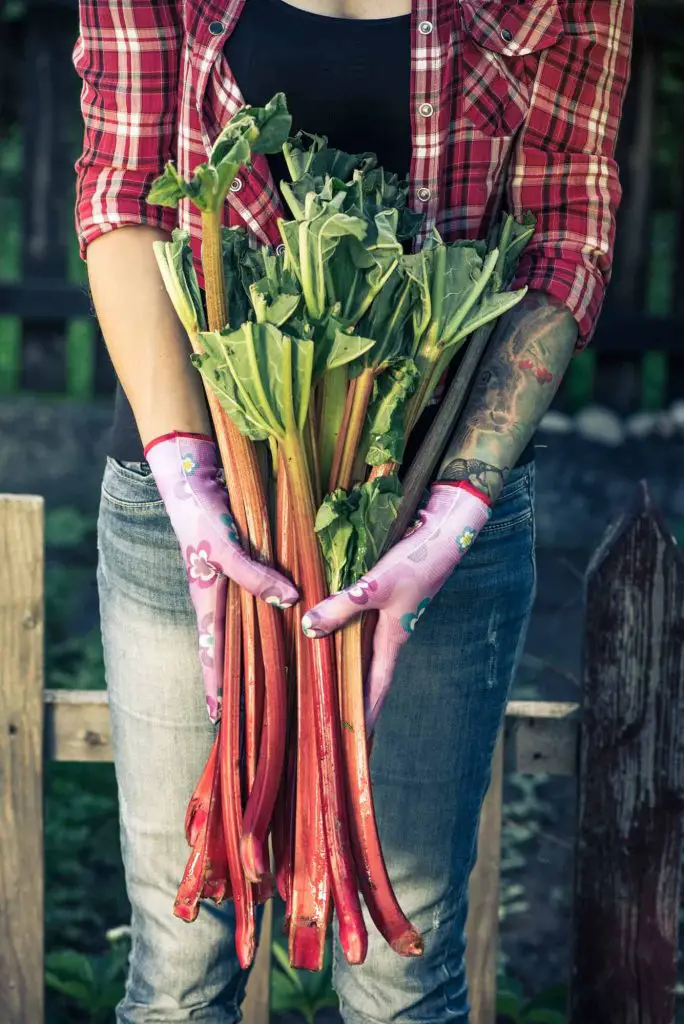
The perennial vegetable – rhubarb is generally geared up and consumed like a fruit.
In warmer climates, it is grown as winter annual. Once mature, it reaches up to two to three feet tall and three to four feet wide. Generally, you can’t harvest the vegetable for the very first two years. It needs two years to establish its roots in the soil.
It is a cool-season crop and typically grown as a perennial vegetable in temperate climates. For optimal growth response, plant the seeds or purchased crows in full sun. It is better to avoid partial to deep shade conditions; otherwise, this can lead to thin stems.
Regarding soil conditions, prepare moist, well-draining, fertile soil with pH values ranging from 5.5 to 6.5. The herbaceous perennial vegetable loves acidic soil conditions to nurture and thrive.
They are native to Asia and compatible with USDA hardiness zones 3 through 8. Although mature rhubarb plants are drought-resistant, young and developing rhubarb seedlings, need moist soil and a consistent supply of fresh tap water.
Always remember, avoid over-watering. Over-watering leads to root rot and other fungal and bacterial disease development. A more straightforward guide is to water the herb when the top 1 to 3 inches of soil feels dry to your fingers. And one more thing, add organic fertilizers like manure and compost to boost the overall growth and development of the herb.
4. Horseradish (Armoracia rusticana)
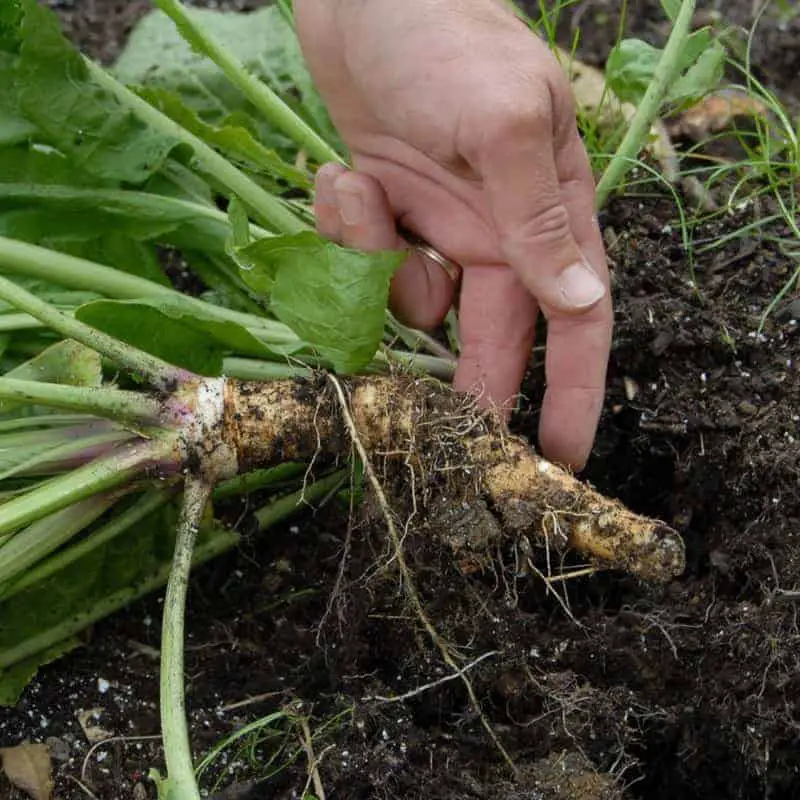
Horseradish is a perennial vegetable that is widely grown in-household for the pungent roots. The vegetable is basically grown for its culinary and kitchen uses. Technically, horseradish is a cluster-forming vegetable and belongs to the Brassicaceae family.
Native to Europe, it’s grown from root parts in pots and sometimes outdoors gardens. Concerning sunlight conditions, it’s not picky. You can grow in the sunniest spot for better growth, although it performs better in partial to deep shade conditions.
Concerning soil, prepare loose, well-draining, and rich in organic matter soil. Make sure the soil pH is within the range of 6.0 to 7.5. The herb is a hardy perennial in USDA zones 3 through 9.
Lastly, never allow the soil to turn completely dry. Keep on constantly watering for better growth and germination.
5. Good King Henry (Blitum bonus-Henricus)
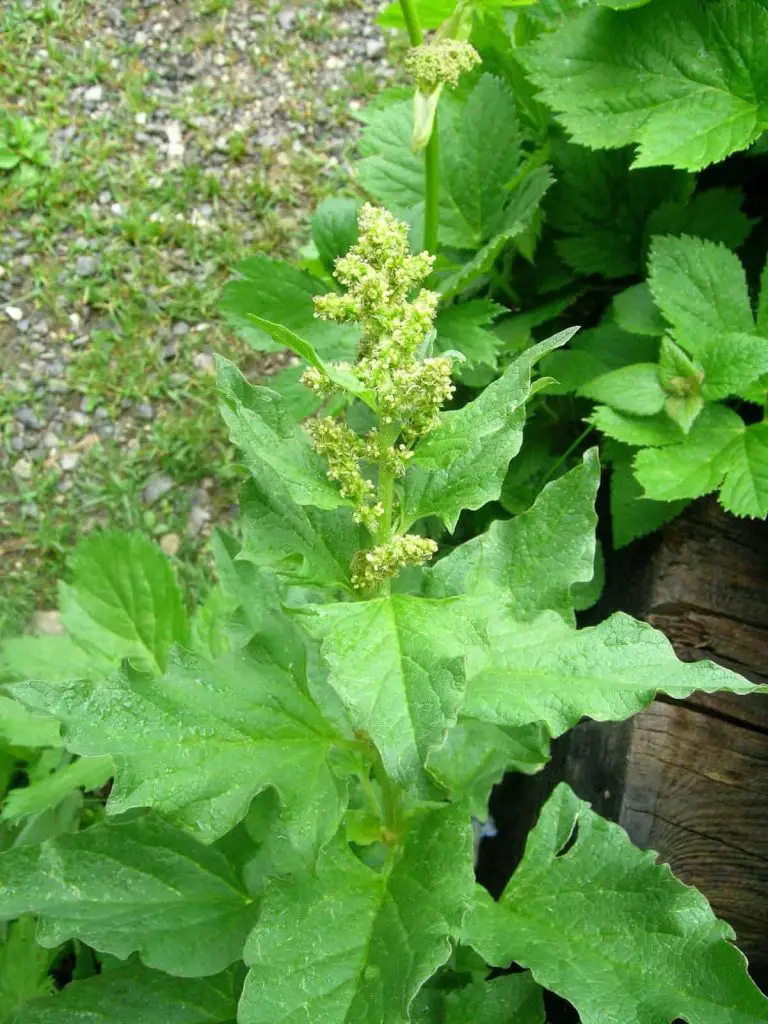
Good King Henry is a local European vegetable grown for its yummy shoots, flower buds, and leaves. You can grow this spinach family member vegetable in full sun to part shade.
Plant the seeds or vegetative roots in a well-draining, fertile, and weed-free soil. Removing weeds before planting Good King Henry is very crucial for stable growth. Otherwise, the weeds will compete with the vegetable for sunlight, nutrients, and space.
Make sure the soil pH is maintained in-between 4.5 to 8.4.
6. Wild Garlic (Allium ursinum)
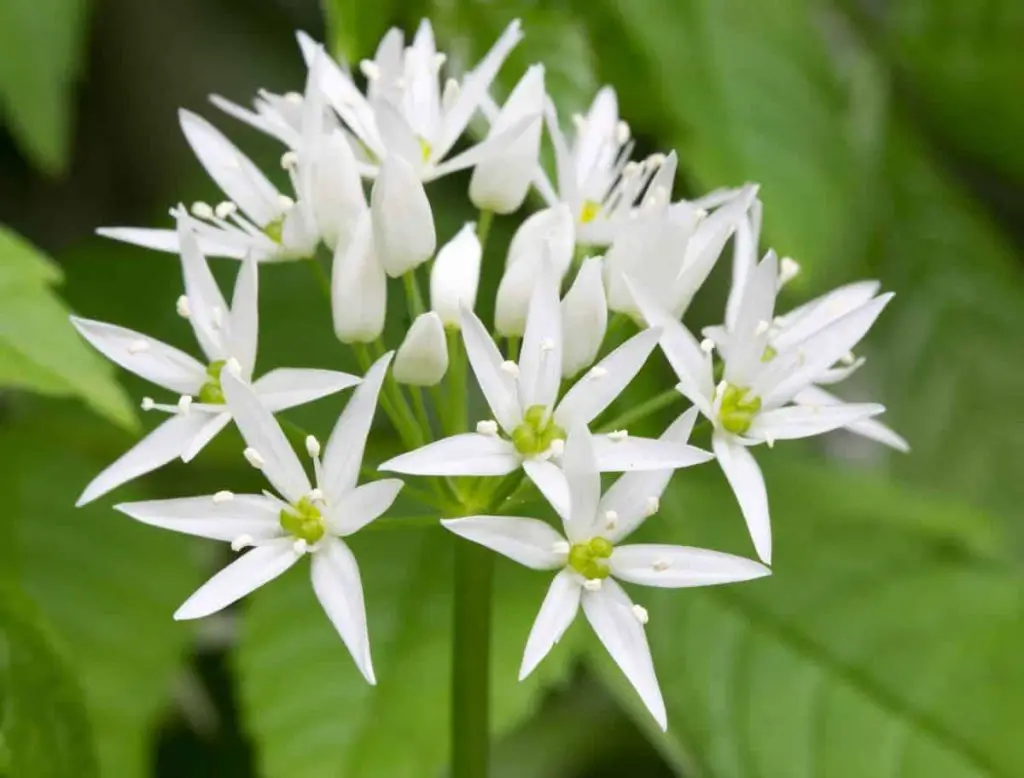
Wild garlic is a bulbous perennial and edible vegetable that’s native to Asia and Europe.
It is the sweetheart of home gardeners and a convenient kitchen companion. Both the bulbs and leaves are edible and widely used in cuisines and Italian dishes. Before growing wild garlic in gardens and pots, opt for a location that receives at least 06 to 08 hours of daylight.
Next, prepare a soil that is rich, moist, and well-draining. Don’t skip testing the soil for pH value. It should be stuck in between 6.0 to 7.0. The vegetable is hardy perennial to USDA zones 4 through 9.
7. Potato Onion (Allium cepa var. aggregatum)
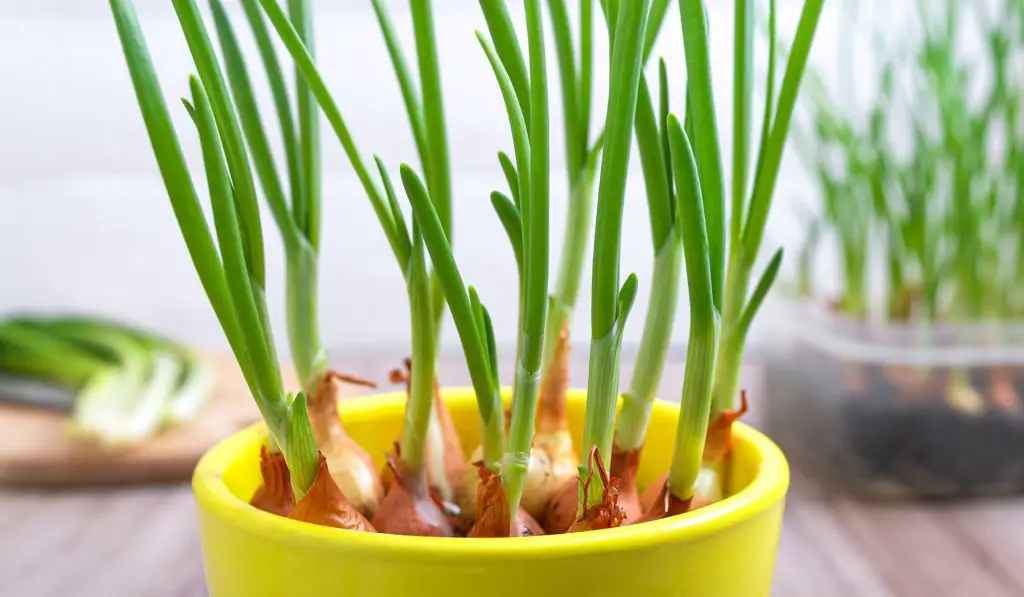
The potato onion, also known as multiplier onion, is hardy perennial to USDA hardiness zones 5 through 8. This vegetable has a sturdier flavor than its counterpart’s sweet onions and shallots.
The herb usually grows 2 to 4 inches in diameter and needs at least 06 to 08 hours of sunlight. Therefore, never skip planting the vegetable in the sunniest spot to meet its light demand.
Vis-à-vis soil conditions, prepare a soil that is rich in organic content, acidic, and well-draining. If your garden soil, by any chance, is not richly fertile, you can add manure or compost to amplify the organic matter.
Lastly, keep the soil moist by misting water at the base of the herb. Don’t over-water. It leads to the development of fungal and bacterial diseases.
8. Jerusalem Artichokes (Helianthus tuberosus)
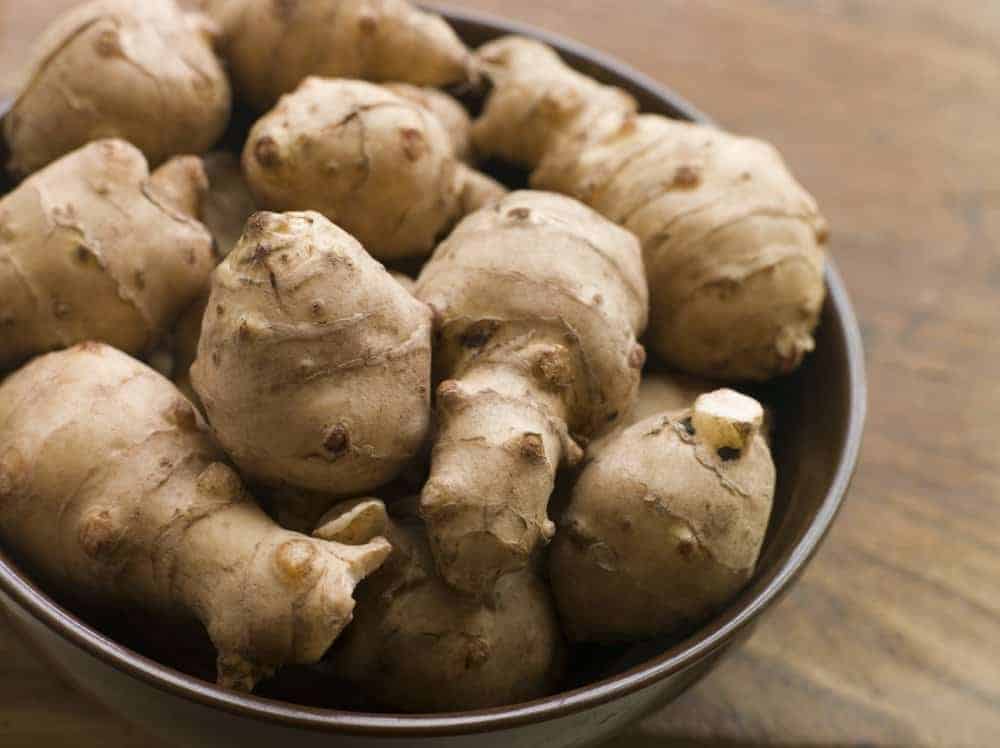
Jerusalem artichokes are herbaceous perennial vegetables well-suited to USDA hardiness zones 3 through 9. Contrary to their common name, Jerusalem artichokes are indigenous to Canada and United States.
Interestingly, they are easy-to-grow herbs to such a point they usually become invasive in an uncontrolled environment. Sunchoke or sunroot (other names for Jerusalem artichokes) is a beautiful addition for greenhorn gardeners.
Naturally, the vegetable is moderately growing and reaches the maturity stage in about 18 to 20 weeks. You can grow this wonderful vegetable in full to partial shade. But according to experts, it needs 06 hours of daylight for perfect growth and better yields.
Regarding soil conditions, they are not picky. You can grow them in any soil unless the soil is too heavy, non-fertile, and barren. Nonetheless, for high yield and perfect growth, grow them infertile, loose, well-draining, and somewhat alkaline soils.
Although the herb is drought tolerant, daily or weekly watering during the growing season is considered optimal for the perfect growth and development. Last but not least, if your garden soils are poorly fertile, add organic mulch or manure to increase the fertility quotient. This practice will surely boost the yield and production of Jerusalem artichokes.
9. Lovage (Levisticum officnale)
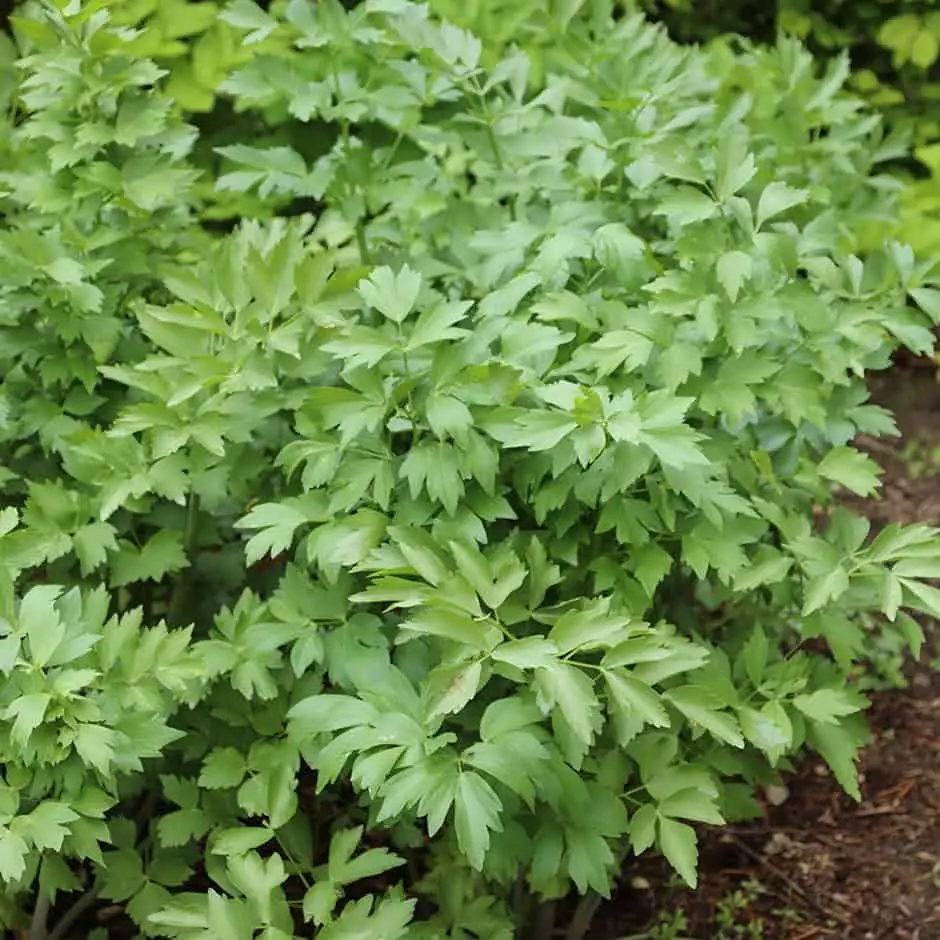
Lovage is a winter-hardy perennial vegetable. Ecologically it’s well-suited to USDA hardiness zones 4 through 8 and reaches up to six feet height at maturity. On soil conditions, prepare a rich, soft, loamy, and loamy soil.
Moreover, it calls for partial shade, although it nurtures at a nominal rate in full sunlight conditions. Other than that, all herb parts are edible such as leaves, stalks, seeds, roots, and stalks. Furthermore, the herb is the best kitchen companion and best alternative to parsley.
In a nutshell, grow the lovage vegetable in full sunlight to partial shade conditions, 2 to 3 feet apart, to avoid overcrowding and rich organic soil.
10. Earthnut Pea (Lathyrus tuberosus)

The earthnut pea is an undervalued primeval perennial vegetable. It is generally grown to fix atmospheric nitrogen in the soil. The vegetable increases the nitrogen content of the earth.
To grow earthnut pea, start sowing seeds in mid-April to late May. The seeds must be soaked in lukewarm water before burying them in fields. This practice boosts and enhances the seed sprouting probability.
Make sure to grow earthnut peas in well-draining and loose soil. Next, opt for a location that receives full sun to partial shade and water the fields consistently. Other than that, there are no additional requirements.
11. Eggplant (Solanum melongena)
Eggplant is a perennial veggie grown primarily for its edible fruit. It is an intrinsic member of the nightshade family (Solanaceae).
The vegetable is native to India and South-East Asia. Interestingly, the eggplant is perennial only in warmer climates (tropical and subtropical); it survives as an annual in temperate climates. However, the good news is you can grow eggplants both from seeds and seedlings.
Start growing eggplants indoors, 7 to 10 weeks before your last expected spring frost. Fill your pots with bagged seed starting mix, sow the seeds or seedlings in pots, and cover them with additional soil.
Next, water the pot well and keep the seeds or seedlings moist by consistently applying water. Seeds will start sprouting within 08 to 16 days. Locate your pots in the sunniest spot. In this regard, south or west-facing windows are the optimal choices because these windows receive maximum sunlight in the daytime.
Don’t forget to keep an eagle on your eggplant for pest and disease attacks. To treat diseases and infections, you can use insecticidal soaps and eco-friendly fungicides.
12. Okra (Abelmoschus esculentus)
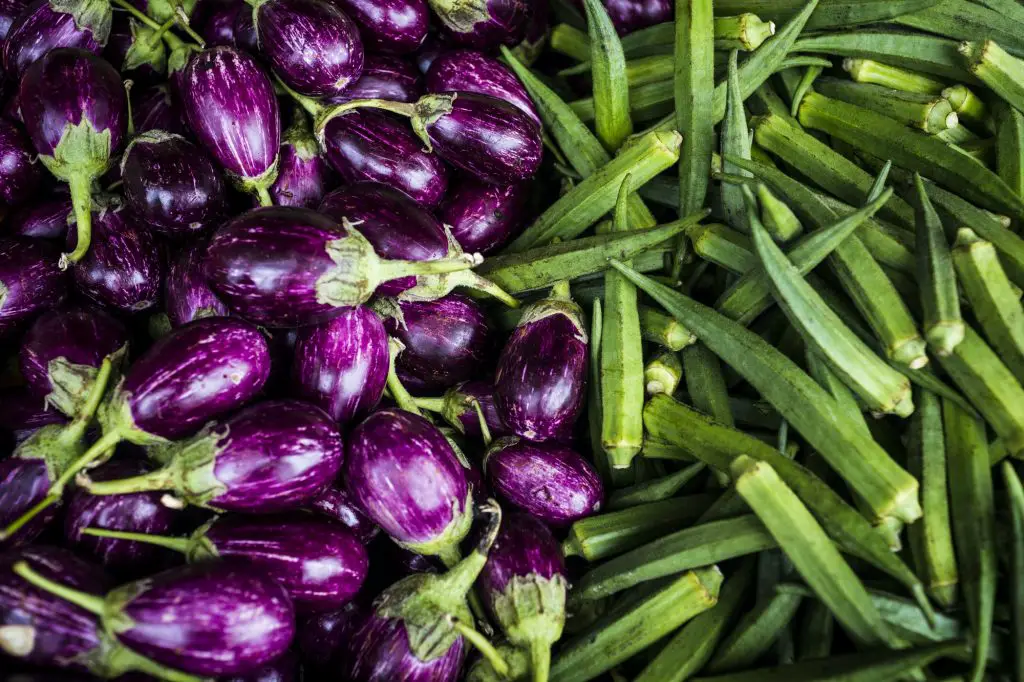
Okra (known as lady’s finger in many English-speaking countries) is a perennial vegetable in dry tropical regions. Still, it is usually grown annually in temperate regions. It is a heat-loving perennial vegetable that can reach up to 7 feet in height.
Officially the veggie is native to Asia and Africa. You can start sowing the seeds in spring when the soil temperature has reached 65 to 75 degrees Fahrenheit. Don’t forget to plant your okra seeds in full sun. Remember, sunlight influences both the pod’s density and vegetable health.
Always use moist, fertile, and well-draining soils and avoid heavy and soggy soils with the pH value ranging from 6.0 to 6.8. And one more thing, never skip watering the veggie every 07 to 10 days. Watering allows the okra to grow at optimal rates and bless you with higher annual yields.
Lastly, you can add some seaweed or fish fertilizer to improve vegetable vigor and productivity.
13.Radicchio (Cichorium intybus var. foliosum)
Radicchio is an intense, purple-red, and cool-weather-loving crop. The veggie is a close relative of cabbage, and it’s hardy perennial in USDA zones 3 through 7.
You can easily chop up its heads and throw them into slaws, salads, plates of pasta, or omelets to add a characteristic bitter flavor to dishes. Radicchio is also known as Italian chicory due to its intense use in Italian dishes.
If you are interested in growing radicchio, always grow the veggie in the sunniest spot in your garden. More specifically, choose a spot in your gardens that receive at least 06 to 08 hours of daylight. Remember, high yields and flavor development are directly correlated with sunlight.
Concerning soil conditions, ensure to grow the veggie in deeply tilled, mellow, sandy loam or fertile soil with pH values ranging from 5.5 to 7.0. Thankfully, once established, it will revisit each fall and spring.
Don’t forget to plant the herbaceous vegetable in early fall or spring and maintain at least 8 to 12 inches of distance between each radicchio seedlings to avoid overcrowding. In a nutshell, plant the herb in full sun to improve both the quantity and quality and add aged compost or rich organic matter to improve the soil properties.
14. Egyptian Walking Onion (Allium × proliferum)
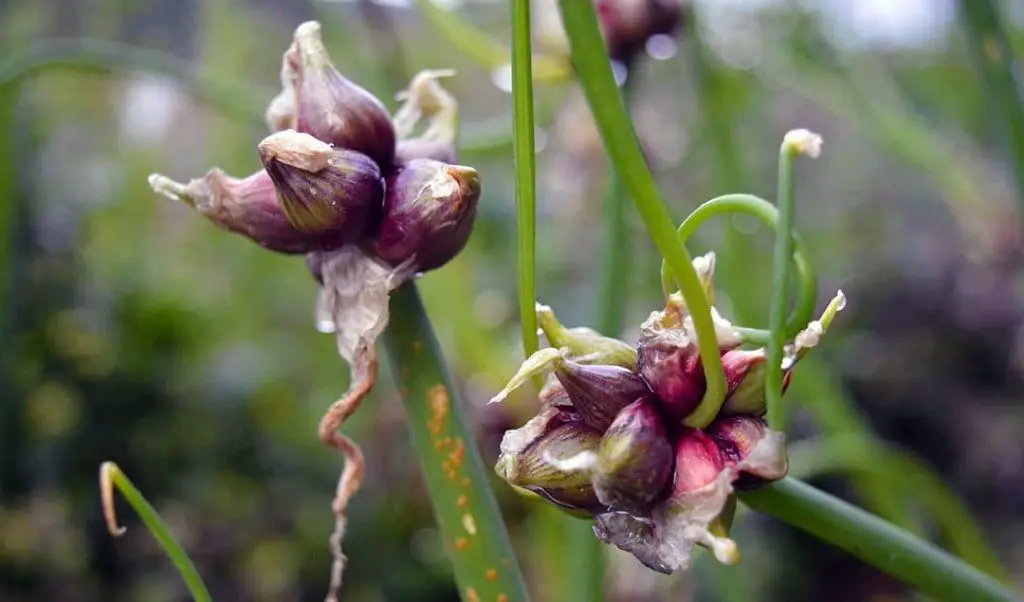
The Egyptian walking onion is a hybrid (manmade) easy-to-grow perennial vegetable belonging to the garlic family. Apparently, the name walking onion does sound like an amusing name for a perennial vegetable. Nonetheless, the reality is, this vegetable will raise and nurture to walk across your garden.
The Egyptian walking onion is hardy in USDA zones 3 through 7 and adores growing in full sun. You can start sowing the bulbs either in mid-spring or late summer and never skip to use, well-draining and slightly fertile soil with pH values ranging from 6.2 to 6.8.
Other than that, there are no additional requirements. As mentioned, the veggie is quite an easy-to-grow perennial.
15. Watercress (Nasturtium officinale)
Watercress is a hardy perennial vegetable grown for its sparkling and slightly peppery-tasting stems and leaves.
The veggie is a hardy perennial in USDA hardiness zones 6 through 11. It is primarily used for preparing sandwiches and salad dressings. Try sowing the seeds, cuttings, or stems in full sunlight conditions.
Regarding soil conditions, opt for soggy soils with pH values ranging from 6.5 to 7.5. And one more thing, whiteflies, spider mites, and lady beetles are serious pests of watercress. Try controlling them with organic insecticidal soap.
Need more help or ideas for your home garden? Check out these ideas:

